Nanopesticides in Agriculture: Benefits and Challenge in Agricultural Productivity, Toxicological Risks to Human Health and Environment
Abstract
1. Introduction
2. Nanotechnology
2.1. Nanopesticides
2.2. Innovative-Nanoformulation Encapsulating Pesticides
3. Physical and Chemical Systems for Agrochemical Delivery
4. Lipid-Based Nanopesticides
5. Nanocarriers and Toxicity of Pesticides
6. Potential Ameliorative Impact of Nanoparticles
7. Conclusions
Author Contributions
Funding
Informed Consent Statement
Data Availability Statement
Acknowledgments
Conflicts of Interest
Abbreviations
| AcI | Agrochemical ingredients |
| ATP | Attapulgite |
| AgNP | Silver nanoparticle |
| AuNP | Gold nanoparticle |
| CuNP | Cuprum nanoparticle |
| CNT-g-PCA | Carbon nanotube-polycaprolactone |
| dsRNA | Double-stranded RNA |
| GRAS | Generally recognized as safe |
| IPEC | Interpolyelectrolyte complex |
| LDHs | Layered double hydroxides |
| MCPA | 4-chloro-2-methylphenoxy-acetic acid |
| mPEG13–b–PLGA5–3 | Monomethoxy (polyethylene glycol)13-poly (D, L-Lactide-co-Glycolide) |
| MWCNT | Multi-walled carbon nanotube |
| NP | Nanoparticle |
| PEG | Polyethylene-glycol |
| PC | Phosphatidyl choline |
| PE | Pickering emulsion |
| PEO-PMAA | Poly-ethylene oxide-b-methacrylic acid |
| pGPMA | pGuanidine-propyl methacrylamide polymers |
| PLGA | Poly-lactic-glycolic acid |
| siRNA | Small interfering RNA |
| α-RAFT | Reversible addition-fragmentation chain transfer |
References
- Kah, M.; Hofmann, T. Nanopesticide research: Current trends and future priorities. Environ. Int. 2014, 63, 224–235. [Google Scholar] [CrossRef]
- Yadav, R.K.; Singh, N.B.; Singh, A.; Yadav, V.; Bano, C.; Khare, S.; Niharika. Expanding the horizons of nanotechnology in agriculture: Recent advances, challenges and future perspectives. Vegetos 2020, 33, 203–221. [Google Scholar] [CrossRef]
- Bombo, A.B.; Pereira, A.E.S.; Lusa, M.G.; De Medeiros Oliveira, E.; De Oliveira, J.L.; Campos, E.V.R.; De Jesus, M.B.; Oliveira, H.C.; Fraceto, L.F.; Mayer, J.L.S. A Mechanistic View of Interactions of a Nanoherbicide with Target Organism. J. Agric. Food Chem. 2019, 67, 4453–4462. [Google Scholar] [CrossRef]
- Osorio-Echavarría, J.; Osorio-Echavarría, J.; Ossa-Orozco, C.P.; Gómez-Vanegas, N.A. Synthesis of silver nanoparticles using white-rot fungus Anamorphous Bjerkandera sp. R1: Influence of silver nitrate concentration and fungus growth time. Sci. Rep. 2021, 11, 1–14. [Google Scholar] [CrossRef]
- Vigneshwaran, N.; Kathe, A.A.; Varadarajan, P.V.; Nachane, R.P.; Balasubramanya, R.H. Biomimetics of silver nanoparticles by white rot fungus, Phaenerochaete chrysosporium. Colloids Surf. B Biointerfaces 2006, 53, 55–59. [Google Scholar] [CrossRef] [PubMed]
- Prasad, R.; Bhattacharyya, A.; Nguyen, Q.D. Nanotechnology in sustainable agriculture: Recent developments, challenges, and perspectives. Front. Microbiol. 2017, 8, 1–13. [Google Scholar] [CrossRef]
- Fraceto, L.F.; Grillo, R.; de Medeiros, G.A.; Scognamiglio, V.; Rea, G.; Bartolucci, C. Nanotechnology in agriculture: Which innovation potential does it have? Front. Environ. Sci. 2016, 4, 1–5. [Google Scholar] [CrossRef]
- Zielińska, A.; Costa, B.; Ferreira, M.V.; Miguéis, D.; Louros, J.M.S.; Durazzo, A.; Lucarini, M.; Eder, P.; Chaud, M.V.; Morsink, M.; et al. Nanotoxicology and nanosafety: Safety-by-design and testing at a glance. Int. J. Environ. Res. Public Health 2020, 17, 4657. [Google Scholar] [CrossRef] [PubMed]
- Grillo, R.; dos Santos, N.Z.P.; Maruyama, C.R.; Rosa, A.H.; de Lima, R.; Fraceto, L.F. Poly(e{open}-caprolactone)nanocapsules as carrier systems for herbicides: Physico-chemical characterization and genotoxicity evaluation. J. Hazard. Mater. 2012, 231–232, 1–9. [Google Scholar] [CrossRef]
- Agostini, A.; Mondragón, L.; Coll, C.; Aznar, E.; Marcos, M.D.; Martínez-Máñez, R.; Sancenón, F.; Soto, J.; Pérez-Payá, E.; Amorós, P. Dual Enzyme-Triggered Controlled Release on Capped Nanometric Silica Mesoporous Supports. ChemistryOpen 2012, 1, 17–20. [Google Scholar] [CrossRef] [PubMed]
- Kuhlbusch, T.A.J.; Wijnhoven, S.W.P.; Haase, A. Nanomaterial exposures for worker, consumer and the general public. NanoImpact 2018, 10, 11–25. [Google Scholar] [CrossRef]
- Huang, B.; Chen, F.; Shen, Y.; Qian, K.; Wang, Y.; Sun, C.; Zhao, X.; Cui, B.; Gao, F.; Zeng, Z.; et al. Advances in targeted pesticides with environmentally responsive controlled release by nanotechnology. Nanomaterials 2018, 8, 102. [Google Scholar] [CrossRef]
- Syafrudin, M.; Kristanti, R.A.; Yuniarto, A.; Hadibarata, T.; Rhee, J.; Al-onazi, W.A.; Algarni, T.S.; Almarri, A.H.; Al-Mohaimeed, A.M. Pesticides in Drinking Water—A Review. Int. J. Environ. Res. Public Health 2021, 18, 468. [Google Scholar] [CrossRef] [PubMed]
- Hayles, J.; Johnson, L.; Worthley, C.; Losic, D. Nanopesticides: A Review of Current Research and Perspectives; Elsevier Inc.: Amsterdam, Netherlands, 2017; ISBN 9780128042991. [Google Scholar]
- Khan, I.; Saeed, K.; Khan, I. Nanoparticles: Properties, applications and toxicities. Arab. J. Chem. 2019, 12, 908–931. [Google Scholar] [CrossRef]
- Navarro, E.; Piccapietra, F.; Wagner, B.; Marconi, F.; Kaegi, R.; Odzak, N.; Sigg, L.; Behra, R. Toxicity of silver nanoparticles to Chlamydomonas reinhardtii. Environ. Sci. Technol. 2008, 42, 8959–8964. [Google Scholar] [CrossRef]
- Ferreira, A.J.; Cemlyn-Jones, J.; Robalo Cordeiro, C. Nanoparticles, nanotechnology and pulmonary nanotoxicology. Rev. Port. Pneumol. 2013, 19, 28–37. [Google Scholar] [CrossRef] [PubMed]
- Sarlak, N.; Taherifar, A.; Salehi, F. Synthesis of nanopesticides by encapsulating pesticide nanoparticles using functionalized carbon nanotubes and application of new nanocomposite for plant disease treatment. J. Agric. Food Chem. 2014, 62, 4833–4838. [Google Scholar] [CrossRef]
- Shen, H.; Brandt, A.; Witting-Bissinger, B.E.; Gunnoe, T.B.; Roe, R.M. Novel insecticide polymer chemistry to reduce the enzymatic digestion of a protein pesticide, trypsin modulating oostatic factor (TMOF). Pestic. Biochem. Physiol. 2009, 93, 144–152. [Google Scholar] [CrossRef]
- Patel, S.; Bajpai, J.; Saini, R.; Bajpai, A.K.; Acharya, S. Sustained release of pesticide (Cypermethrin) from nanocarriers: An effective technique for environmental and crop protection. Process Saf. Environ. Prot. 2018, 117, 315–325. [Google Scholar] [CrossRef]
- Alromeed, A.A.; Scrano, L.; Bufo, S.A.; Undabeytia, T. Slow-release formulations of the herbicide MCPA by using clay-protein composites. Pest Manag. Sci. 2015, 71, 1303–1310. [Google Scholar] [CrossRef] [PubMed]
- Parsons, K.H.; Mondal, M.H.; McCormick, C.L.; Flynt, A.S. Guanidinium-Functionalized Interpolyelectrolyte Complexes Enabling RNAi in Resistant Insect Pests. Biomacromolecules 2018, 19, 1111–1117. [Google Scholar] [CrossRef] [PubMed]
- Malandrakis, A.A.; Kavroulakis, N.; Chrysikopoulos, C.V. Copper nanoparticles against benzimidazole-resistant Monilinia fructicola field isolates. Pestic. Biochem. Physiol. 2021, 173, 104796. [Google Scholar] [CrossRef] [PubMed]
- Keller, A.A.; Adeleye, A.S.; Conway, J.R.; Garner, K.L.; Zhao, L.; Cherr, G.N.; Hong, J.; Gardea-Torresdey, J.L.; Godwin, H.A.; Hanna, S.; et al. Comparative environmental fate and toxicity of copper nanomaterials. NanoImpact 2017, 7, 28–40. [Google Scholar] [CrossRef]
- Starnes, D.L.; Unrine, J.M.; Starnes, C.P.; Collin, B.E.; Oostveen, E.K.; Ma, R.; Lowry, G.V.; Bertsch, P.M.; Tsyusko, O.V. Impact of sulfidation on the bioavailability and toxicity of silver nanoparticles to Caenorhabditis elegans. Environ. Pollut. 2015, 196, 239–246. [Google Scholar] [CrossRef]
- Kandpal, N.; Dewangan, H.K.; Nagwanshi, R.; Vaishanav, S.K.; Ghosh, K.K.; Satnami, M.L. Reactivity of Hydroxamate Ions in Cationic Vesicular Media for the Cleavage of Carboxylate Esters. J. Surfactants Deterg. 2017, 20, 331–340. [Google Scholar] [CrossRef]
- Kizilay, E.; Kayitmazer, A.B.; Dubin, P.L. Complexation and coacervation of polyelectrolytes with oppositely charged colloids. Adv. Colloid Interface Sci. 2011, 167, 24–37. [Google Scholar] [CrossRef]
- Skepö, M.; Linse, P. Dissolution of a polyelectrolyte-macroion complex by addition of salt. Phys. Rev. E Stat. Phys. Plasmas Fluids Relat. Interdiscip. Top. 2002, 66, 7. [Google Scholar] [CrossRef] [PubMed]
- Guo, Y.; Yang, Q.; Yan, W.; Li, B.; Qian, K.; Li, T.; Xiao, W.; He, L. Controlled release of acetochlor from poly (butyl methacrylate-diacetone acrylamide) based formulation prepared by nanoemulsion polymerisation method and evaluation of the efficacy. Int. J. Environ. Anal. Chem. 2014, 94, 1001–1012. [Google Scholar] [CrossRef]
- Nuruzzaman, M.; Rahman, M.M.; Liu, Y.; Naidu, R. Nanoencapsulation, Nano-guard for Pesticides: A New Window for Safe Application. J. Agric. Food Chem. 2016, 64, 1447–1483. [Google Scholar] [CrossRef]
- Wang, Q.; Wu, J.; Hao, L.; Wu, Q.; Wang, C.; Wang, Z. Magnetic solid-phase extraction of benzoylurea insecticides by Fe3O4 nanoparticles decorated with a hyper-cross-linked porous organic polymer. J. Sep. Sci. 2018, 41, 3285–3293. [Google Scholar] [CrossRef]
- Yu, X.D.; Liu, Z.C.; Huang, S.L.; Chen, Z.Q.; Sun, Y.W.; Duan, P.F.; Ma, Y.Z.; Xia, L.Q. RNAi-mediated plant protection against aphids. Pest Manag. Sci. 2016, 72, 1090–1098. [Google Scholar] [CrossRef]
- Worthington, K.L.S.; Adamcakova-Dodd, A.; Wongrakpanich, A.; Mudunkotuwa, I.A.; Mapuskar, K.A.; Joshi, V.B.; Allan Guymon, C.; Spitz, D.R.; Grassian, V.H.; Thorne, P.S.; et al. Chitosan coating of copper nanoparticles reduces in vitro toxicity and increases inflammation in the lung. Nanotechnology 2013, 24. [Google Scholar] [CrossRef]
- Zhang, Y.; Chen, W.; Jing, M.; Liu, S.; Feng, J.; Wu, H.; Zhou, Y.; Zhang, X.; Ma, Z. Self-assembled mixed micelle loaded with natural pyrethrins as an intelligent nano-insecticide with a novel temperature-responsive release mode. Chem. Eng. J. 2019, 361, 1381–1391. [Google Scholar] [CrossRef]
- Chen, K.; Yu, G.; He, F.; Zhou, Q.; Xiao, D.; Li, J.; Feng, Y. A pH-responsive emulsion stabilized by alginate-grafted anisotropic silica and its application in the controlled release of λ-cyhalothrin. Carbohydr. Polym. 2017, 176, 203–213. [Google Scholar] [CrossRef] [PubMed]
- Mustafa, I.F.; Hussein, M.Z. Synthesis and technology of nanoemulsion-based pesticide formulation. Nanomaterials 2020, 10, 1608. [Google Scholar] [CrossRef] [PubMed]
- Osman Mohamed Ali, E.; Shakil, N.A.; Rana, V.S.; Sarkar, D.J.; Majumder, S.; Kaushik, P.; Singh, B.B.; Kumar, J. Antifungal activity of nano emulsions of neem and citronella oils against phytopathogenic fungi, Rhizoctonia solani and Sclerotium rolfsii. Ind. Crops Prod. 2017, 108, 379–387. [Google Scholar] [CrossRef]
- Bisset, N.B.; Webster, G.R.; Dong, Y.D.; Boyd, B.J. Understanding the kinetic mixing between liquid crystalline nanoparticles and agrochemical actives. Colloids Surf. B Biointerfaces 2019, 175, 324–332. [Google Scholar] [CrossRef]
- Bang, S.H.; Hwang, I.C.; Yu, Y.M.; Kwon, H.R.; Kim, D.H.; Park, H.J. Influence of chitosan coating on the liposomal surface on physicochemical properties and the release profile of nanocarrier systems. J. Microencapsul. 2011, 28, 595–604. [Google Scholar] [CrossRef]
- Raileanu, M.; Todan, L.; Crisan, M.; Braileanu, A.; Rusu, A.; Bradu, C.; Carpov, A.; Zaharescu, M. Sol-Gel Materials with Pesticide Delivery Properties. J. Environ. Prot. 2010, 1, 302–313. [Google Scholar] [CrossRef][Green Version]
- Ciriminna, R.; Sciortino, M.; Alonzo, G.; De Schrijver, A.; Pagliaro, M. From molecules to systems: Sol-gel microencapsulation in silica-based materials. Chem. Rev. 2011, 111, 765–789. [Google Scholar] [CrossRef]
- Xu, C.; Cao, L.; Zhao, P.; Zhou, Z.; Cao, C.; Li, F.; Huang, Q. Emulsion-based synchronous pesticide encapsulation and surface modification of mesoporous silica nanoparticles with carboxymethyl chitosan for controlled azoxystrobin release. Chem. Eng. J. 2018, 348, 244–254. [Google Scholar] [CrossRef]
- Chen, C.; Zhang, G.; Dai, Z.; Xiang, Y.; Liu, B.; Bian, P.; Zheng, K.; Wu, Z.; Cai, D. Fabrication of light-responsively controlled-release herbicide using a nanocomposite. Chem. Eng. J. 2018, 349, 101–110. [Google Scholar] [CrossRef]
- James, B.; David, B.; David, F.; Frederick, N. Low Foaming Herbicide Formulation of Glyphosate. Patent NZ20030535649, 21 March 2003. [Google Scholar]
- Yalamalle, V.R.; Tomar, B.S.; Kumar, A.; Ahammed, S.T.P. Polymer coating for higher pesticide use efficiency, seed yield and quality in onion (Allium cepa). Indian J. Agric. Sci. 2019, 89, 1195–1199. [Google Scholar] [CrossRef]
- Xiao, D.; Liang, W.; Xie, Z.; Cheng, J.; Du, Y.; Zhao, J. A temperature-responsive release cellulose-based microcapsule loaded with chlorpyrifos for sustainable pest control. J. Hazard. Mater. 2021, 403, 123654. [Google Scholar] [CrossRef]
- Gao, Y.; Liu, Y.; Qin, X.; Guo, Z.; Li, D.; Li, C.; Wan, H.; Zhu, F.; Li, J.; Zhang, Z.; et al. Dual stimuli-responsive fungicide carrier based on hollow mesoporous silica/hydroxypropyl cellulose hybrid nanoparticles. J. Hazard. Mater. 2021, 414, 125513. [Google Scholar] [CrossRef] [PubMed]
- Wang, N.; Qi, L.; Wang, Y.; Li, X.G. Preparation and Performance of Thermo-sensitive Pyraclostrobin Microcapsules. Chin. J. Pestic. Sci. 2017, 19, 381–387. [Google Scholar] [CrossRef]
- Bahadir, M.; Pfister, G. Controlled Release Formulations of Pesticides. In Controlled Release, Biochemical Effects of Pesticides, Inhibition of Plant Pathogenic Fungi; Springer: Berlin/Heidelberg, Germany, 1990; pp. 1–64. [Google Scholar]
- Sershen, S.R.; Westcott, S.L.; Halas, N.J.; West, J.L. Temperature-sensitive polymer-nanoshell composites for photothermally modulated drug delivery. J. Biomed. Mater. Res. 2000, 51, 293–298. [Google Scholar] [CrossRef]
- Xiang, Y.; Lu, X.; Yue, J.; Zhang, Y.; Sun, X.; Zhang, G.; Cai, D.; Wu, Z. Stimuli-responsive hydrogel as carrier for controlling the release and leaching behavior of hydrophilic pesticide. Sci. Total Environ. 2020, 722, 137811. [Google Scholar] [CrossRef] [PubMed]
- Cătălin Balaure, P.; Gudovan, D.; Gudovan, I. Nanopesticides: A New Paradigm in Crop Protection; Academic Press: Cambridge, MA, USA, 2017; ISBN 9780128042991. [Google Scholar]
- Vithanage, M.; Seneviratne, M.; Ahmad, M.; Sarkar, B.; Ok, Y.S. Contrasting effects of engineered carbon nanotubes on plants: A review. Environ. Geochem. Health 2017, 39, 1421–1439. [Google Scholar] [CrossRef]
- Li, Z.; Yu, T.; Paul, R.; Fan, J.; Yang, Y.; Wei, Q. Agricultural nanodiagnostics for plant diseases: Recent advances and challenges. Nanoscale Adv. 2020, 2, 3083–3094. [Google Scholar] [CrossRef]
- Li, G.-B.; Wang, J.; Kong, X.P. Coprecipitation-based synchronous pesticide encapsulation with chitosan for controlled spinosad release. Carbohydr. Polym. 2020, 249. [Google Scholar] [CrossRef]
- Gahan, L.J.; Gould, F.; Heckel, D.G. Identification of a gene associated with Bt resistance in Heliothis virescens. Science 2001, 293, 857–860. [Google Scholar] [CrossRef] [PubMed]
- Severino, P.; da Silva, C.F.; Andrade, L.N.; de Lima Oliveira, D.; Campos, J.; Souto, E.B. Alginate Nanoparticles for Drug Delivery and Targeting. Curr. Pharm. Des. 2019, 25, 1312–1334. [Google Scholar] [CrossRef] [PubMed]
- Zhao, X.; Li, J.; Feng, Y.; Yu, G.; Zhou, Q.; He, F.; Xiao, D.; Chen, K.; Zhang, L. Self-aggregation behavior of hydrophobic sodium alginate derivatives in aqueous solution and their application in the nanoencapsulation of acetamiprid. Int. J. Biol. Macromol. 2018, 106, 418–424. [Google Scholar] [CrossRef]
- Ranganathan, P.; Mutharani, B.; Chen, S.M.; Sireesha, P. Biocompatible chitosan-pectin polyelectrolyte complex for simultaneous electrochemical determination of metronidazole and metribuzin. Carbohydr. Polym. 2019, 214, 317–327. [Google Scholar] [CrossRef] [PubMed]
- Wilson, D.R.; Suprenant, M.P.; Michel, J.H.; Wang, E.B.; Tzeng, S.Y.; Green, J.J. The role of assembly parameters on polyplex poly(beta-amino ester) nanoparticle transfections. Biotechnol. Bioeng. 2019, 116, 1220–1230. [Google Scholar] [CrossRef]
- Sánchez-López, E.; Gomes, D.; Esteruelas, G.; Bonilla, L.; Lopez-Machado, A.L.; Galindo, R.; Cano, A.; Espina, M.; Ettcheto, M.; Camins, A. Metal-based nanoparticles as antimicrobial agents: An overview. Nanomaterials 2020, 10, 292. [Google Scholar] [CrossRef]
- Ghormade, V.; Deshpande, M.V.; Paknikar, K.M. Perspectives for nano-biotechnology enabled protection and nutrition of plants. Biotechnol. Adv. 2011, 29, 792–803. [Google Scholar] [CrossRef]
- Fletcher, S.J.; Reeves, P.T.; Hoang, B.T.; Mitter, N. A Perspective on RNAi-Based Biopesticides. Front. Plant Sci. 2020, 11. [Google Scholar] [CrossRef]
- Haller, S.; Widmer, F.; Siegfried, B.D.; Zhuo, X.; Romeis, J. Responses of two ladybird beetle species (Coleoptera: Coccinellidae) to dietary RNAi. Pest Manag. Sci. 2019, 75, 2652–2662. [Google Scholar] [CrossRef] [PubMed]
- Hazra, D.K.; Purkait, A. Role of pesticide formulations for sustainable crop protection and environment management: A review. J. Pharmacogn. Phytochem. 2019, 8, 686–693. [Google Scholar]
- Surendhiran, M.; Raja, K.; Jerlin, R.; Marimuthu, S.; Srivignesh, S. Nano Emulsion Seed Invigouration for Improved. Int. J. Agric. 2019, 9, 333–340. [Google Scholar]
- Fang, Z.; Yang, D.; Gao, Y.; Li, H. pH-responsible Pickering emulsion and its catalytic application for reaction at water–oil interface. Colloid Polym. Sci. 2015, 293, 1505–1513. [Google Scholar] [CrossRef]
- Tu, F.; Lee, D. Shape-changing and amphiphilicity-reversing Janus particles with pH-responsive surfactant properties. J. Am. Chem. Soc. 2014, 136, 9999–10006. [Google Scholar] [CrossRef]
- De Souza, J.F.; da Silva Pontes, K.; Alves, T.F.R.; Torqueti de Barros, C.; Amaral, V.A.; de Moura Crescencio, K.M.; Rios, A.C.; Batain, F.; Souto, E.B.; Severino, P.; et al. Structural comparison, physicochemical properties, and in vitro release profile of curcumin-loaded lyotropic liquid crystalline nanoparticle: Influence of hydrotrope as interface stabilizers. J. Mol. Liq. 2020, 306, 112861. [Google Scholar] [CrossRef]
- Hwang, I.C.; Kim, T.H.; Bang, S.H.; Kim, K.S.; Kwon, H.R.; Seo, M.J.; Youn, Y.N.; Park, H.J.; Yasunaga-Aoki, C.; Yu, Y.M. Insecticidal Effect of Controlled Release Formulations of Etofenprox Based on Nano-bio Technique. J. Fac. Agric. Kyushu Univ. 2011, 56, 33–40. [Google Scholar] [CrossRef]
- Jampílek, J.; Kráľová, K. Nanopesticides: Preparation, Targeting, and Controlled Release; Academic Press: Cambridge, MA, USA, 2017; ISBN 9780128042991. [Google Scholar]
- Sanzari, I.; Leone, A.; Ambrosone, A. Nanotechnology in Plant Science: To Make a Long Story Short. Front. Bioeng. Biotechnol. 2019, 7, 1–12. [Google Scholar] [CrossRef] [PubMed]
- Kah, M.; Kookana, R.S.; Gogos, A.; Bucheli, T.D. A critical evaluation of nanopesticides and nanofertilizers against their conventional analogues. Nat. Nanotechnol. 2018, 13, 677–684. [Google Scholar] [CrossRef] [PubMed]
- Pérez-Iglesias, J.M.; Franco-Belussi, L.; Natale, G.S.; de Oliveira, C. Biomarkers at different levels of organisation after atrazine formulation (SIPTRAN 500SC®) exposure in Rhinella schineideri (Anura: Bufonidae) Neotropical tadpoles. Environ. Pollut. 2019, 244, 733–746. [Google Scholar] [CrossRef]
- Schnoor, B.; Elhendawy, A.; Joseph, S.; Putman, M.; Chacón-Cerdas, R.; Flores-Mora, D.; Bravo-Moraga, F.; Gonzalez-Nilo, F.; Salvador-Morales, C. Engineering Atrazine Loaded Poly (lactic- co-glycolic Acid) Nanoparticles to Ameliorate Environmental Challenges. J. Agric. Food Chem. 2018, 66, 7889–7898. [Google Scholar] [CrossRef]
- Wang, T.; Ren, J.; Qu, G.; Liang, D.; Hu, S. Glyphosate contaminated soil remediation by atmospheric pressure dielectric barrier discharge plasma and its residual toxicity evaluation. J. Hazard. Mater. 2016, 320, 539–546. [Google Scholar] [CrossRef]
- Souza, D.R.D.; Trovõ, A.G.; Filho, N.R.A.; Silva, M.A.A.; Machado, A.E.H. Degradation of the commercial herbicide glyphosate by photo-fenton process: Evaluation of kinetic parameters and toxicity. J. Braz. Chem. Soc. 2013, 24, 1451–1460. [Google Scholar] [CrossRef]
- Richard, S.; Moslemi, S.; Sipahutar, H.; Benachour, N.; Seralini, G.E. Differential effects of glyphosate and roundup on human placental cells and aromatase. Environ. Health Perspect. 2005, 113, 716–720. [Google Scholar] [CrossRef]
- De Oliveira, C.R.; Fraceto, L.F.; Rizzi, G.M.; Salla, R.F.; Abdalla, F.C.; Costa, M.J.; Silva-Zacarin, E.C.M. Hepatic effects of the clomazone herbicide in both its free form and associated with chitosan-alginate nanoparticles in bullfrog tadpoles. Chemosphere 2016, 149, 304–313. [Google Scholar] [CrossRef]
- De Paiva, P.P.; Delcorso, M.C.; Matheus, V.A.; do Nascimento de Queiroz, S.C.; Collares-Buzato, C.B.; Arana, S. Acute toxicity of commercial atrazine in Piaractus mesopotamicus: Histopathological, ultrastructural, molecular, and genotoxic evaluation. Vet. World 2017, 10, 1008–1019. [Google Scholar] [CrossRef] [PubMed]
- Nogueira, E.N.; Dores, E.F.G.C.; Pinto, A.A.; Amorim, R.S.S.; Ribeiro, M.L.; Lourencetti, C. Currently used pesticides in water matrices in central-western Brazil. J. Braz. Chem. Soc. 2012, 23, 1476–1487. [Google Scholar] [CrossRef][Green Version]
- Dos Santos, K.C.; Martinez, C.B.R. Genotoxic and biochemical effects of atrazine and Roundup®, alone and in combination, on the Asian clam Corbicula fluminea. Ecotoxicol. Environ. Saf. 2014, 100, 7–14. [Google Scholar] [CrossRef] [PubMed]
- Santos, T.G.; Martinez, C.B.R. Atrazine promotes biochemical changes and DNA damage in a Neotropical fish species. Chemosphere 2012, 89, 1118–1125. [Google Scholar] [CrossRef] [PubMed]
- Kushwaha, S.; Vikram, A.; Trivedi, P.P.; Jena, G.B. Alkaline, Endo III and FPG modified comet assay as biomarkers for the detection of oxidative DNA damage in rats with experimentally induced diabetes. Mutat. Res. Genet. Toxicol. Environ. Mutagen. 2011, 726, 242–250. [Google Scholar] [CrossRef]
- Pérez-Iglesias, J.M.; Ruiz de Arcaute, C.; Natale, G.S.; Soloneski, S.; Larramendy, M.L. Evaluation of imazethapyr-induced DNA oxidative damage by alkaline Endo III- and Fpg-modified single-cell gel electrophoresis assay in Hypsiboas pulchellus tadpoles (Anura, Hylidae). Ecotoxicol. Environ. Saf. 2017, 142, 503–508. [Google Scholar] [CrossRef]
- Šefčíková, Z.; Babeľová, J.; Čikoš, Š.; Kovaříková, V.; Burkuš, J.; Špirková, A.; Koppel, J.; Fabian, D. Fipronil causes toxicity in mouse preimplantation embryos. Toxicology 2018, 410, 214–221. [Google Scholar] [CrossRef] [PubMed]
- Wasef, L.; Nassar, A.M.K.; El-Sayed, Y.S.; Samak, D.; Noreldin, A.; Elshony, N.; Saleh, H.; Elewa, Y.H.A.; Hassan, S.M.A.; Saati, A.A.; et al. The potential ameliorative impacts of cerium oxide nanoparticles against fipronil-induced hepatic steatosis. Sci. Rep. 2021, 11, 1–15. [Google Scholar] [CrossRef] [PubMed]
- Mittal, M.; Siddiqui, M.R.; Tran, K.; Reddy, S.P.; Malik, A.B. Reactive oxygen species in inflammation and tissue injury. Antioxid. Redox Signal. 2014, 20, 1126–1167. [Google Scholar] [CrossRef] [PubMed]
- Santos, T.S.; Dos Passos, E.M.; de Jesus Seabra, M.G.; Souto, E.B.; Severino, P.; da Costa Mendonça, M. Entomopathogenic fungi biomass production and extracellular biosynthesis of silver nanoparticles for bioinsecticide action. Appl. Sci. 2021, 11, 2465. [Google Scholar] [CrossRef]
- Zhang, H.; Ji, Z.; Xia, T.; Meng, H.; Low-Kam, C.; Liu, R.; Pokhrel, S.; Lin, S.; Wang, X.; Liao, Y.P.; et al. Use of metal oxide nanoparticle band gap to develop a predictive paradigm for oxidative stress and acute pulmonary inflammation. ACS Nano 2012, 6, 4349–4368. [Google Scholar] [CrossRef]
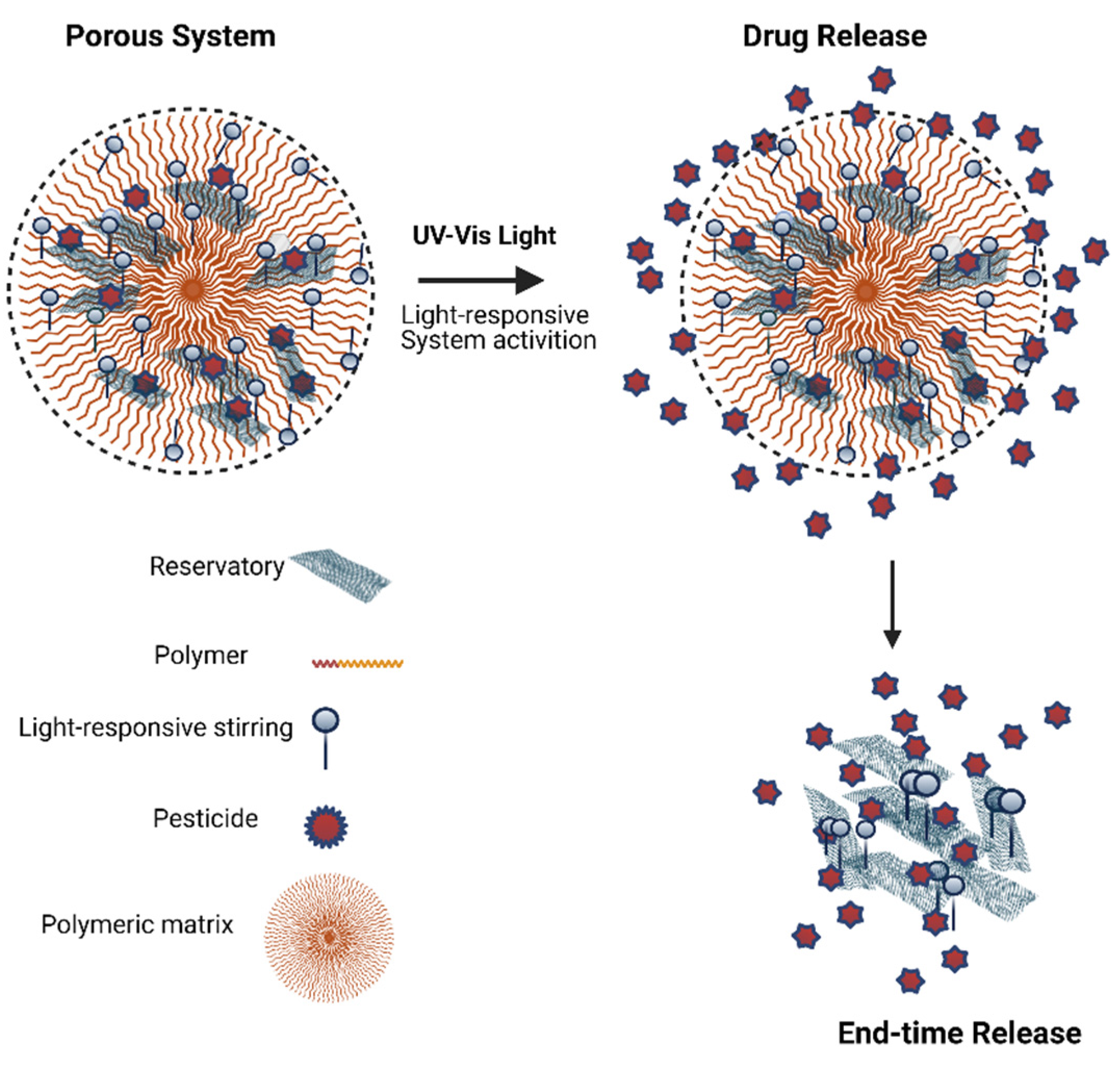

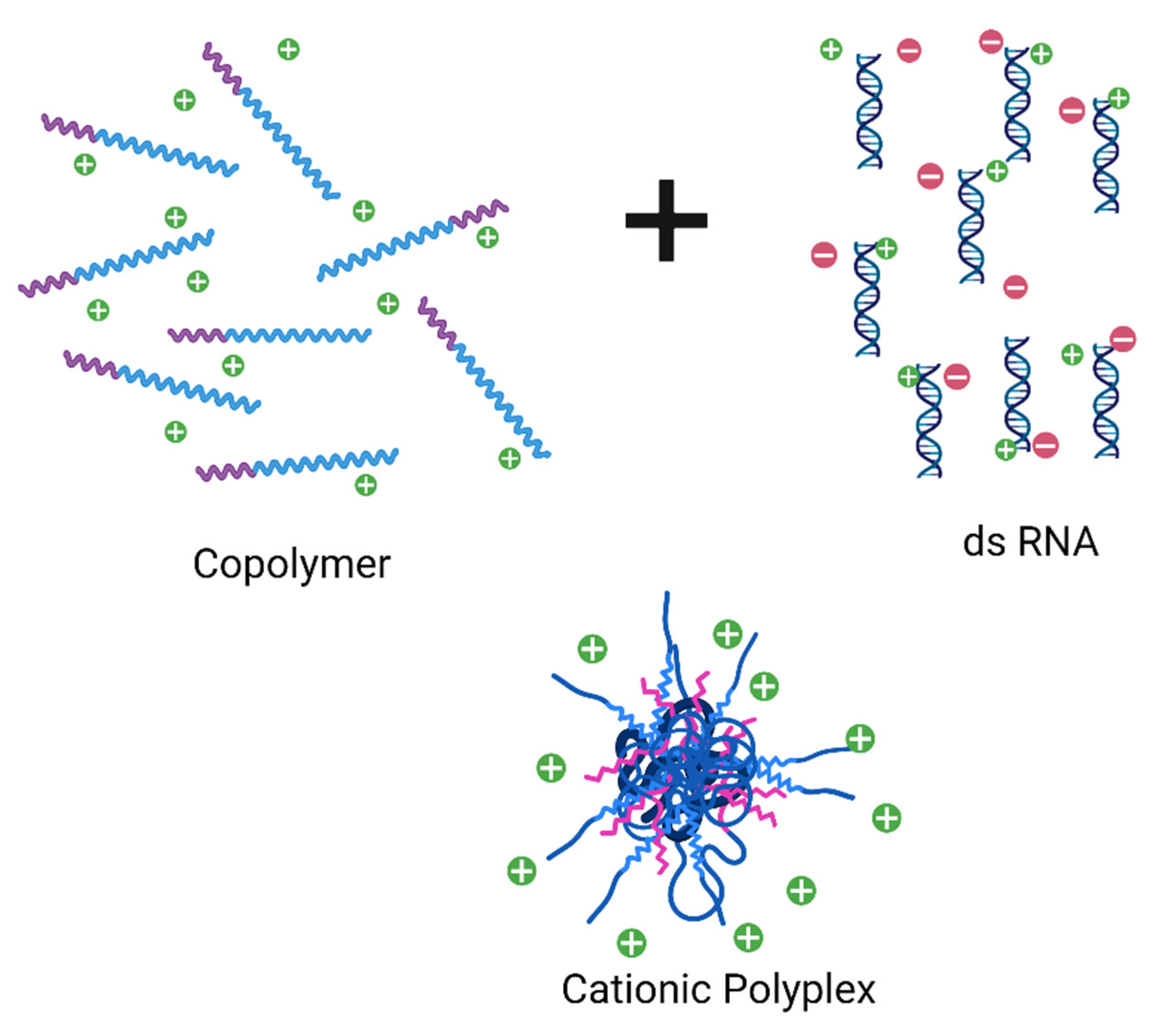
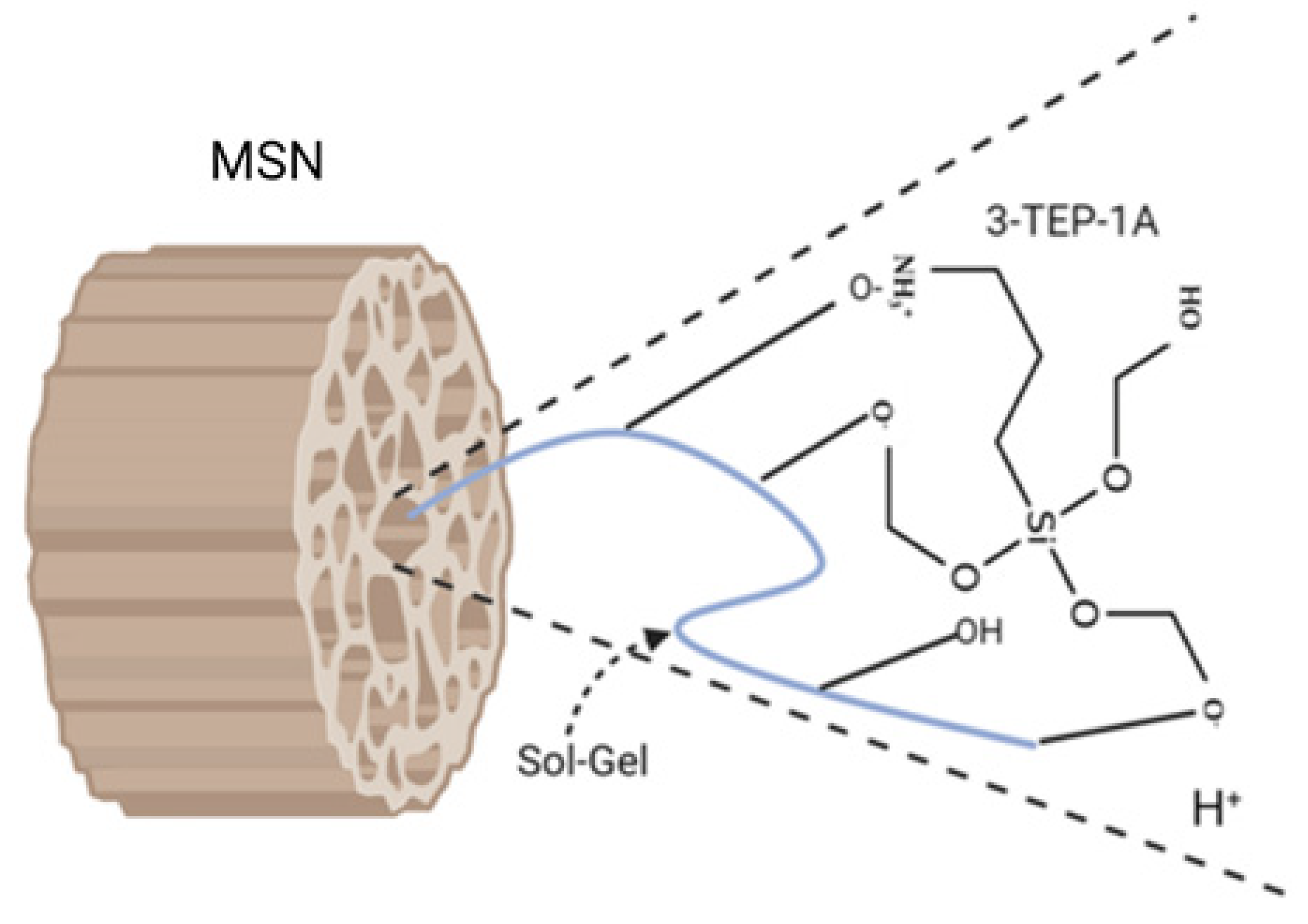
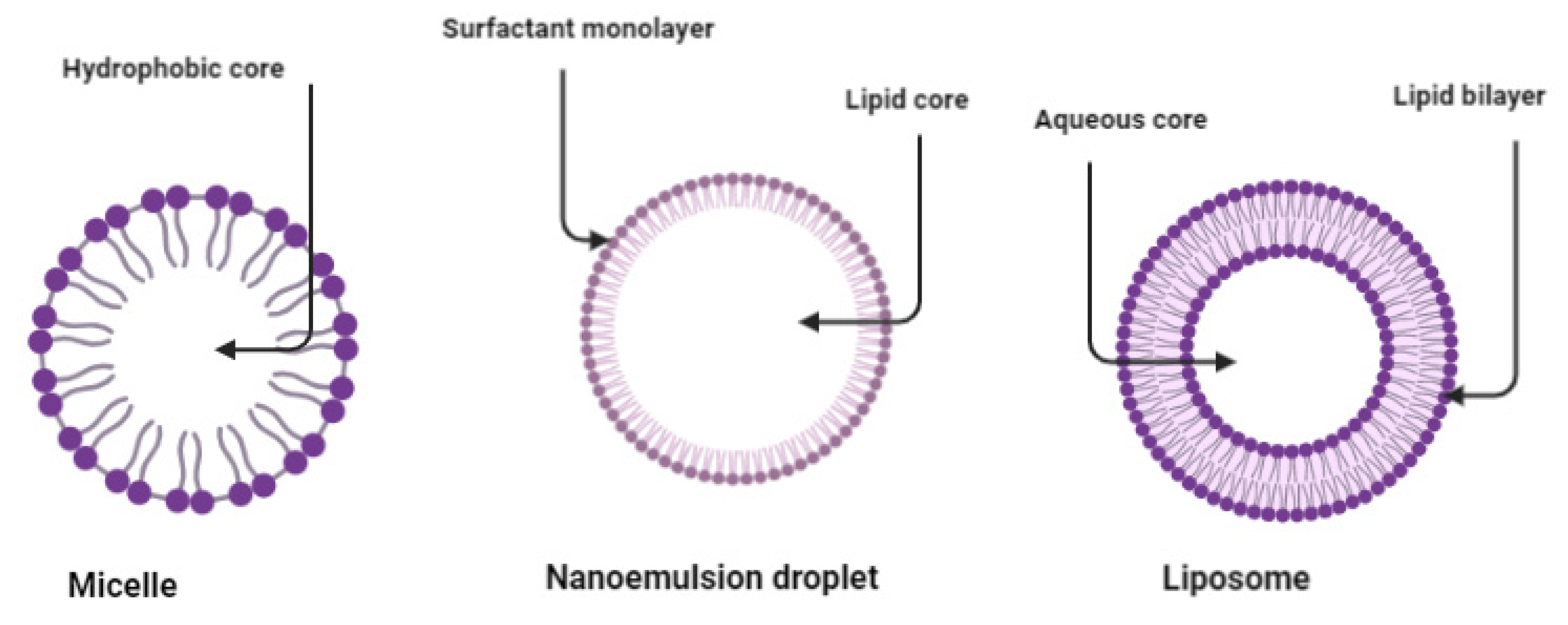
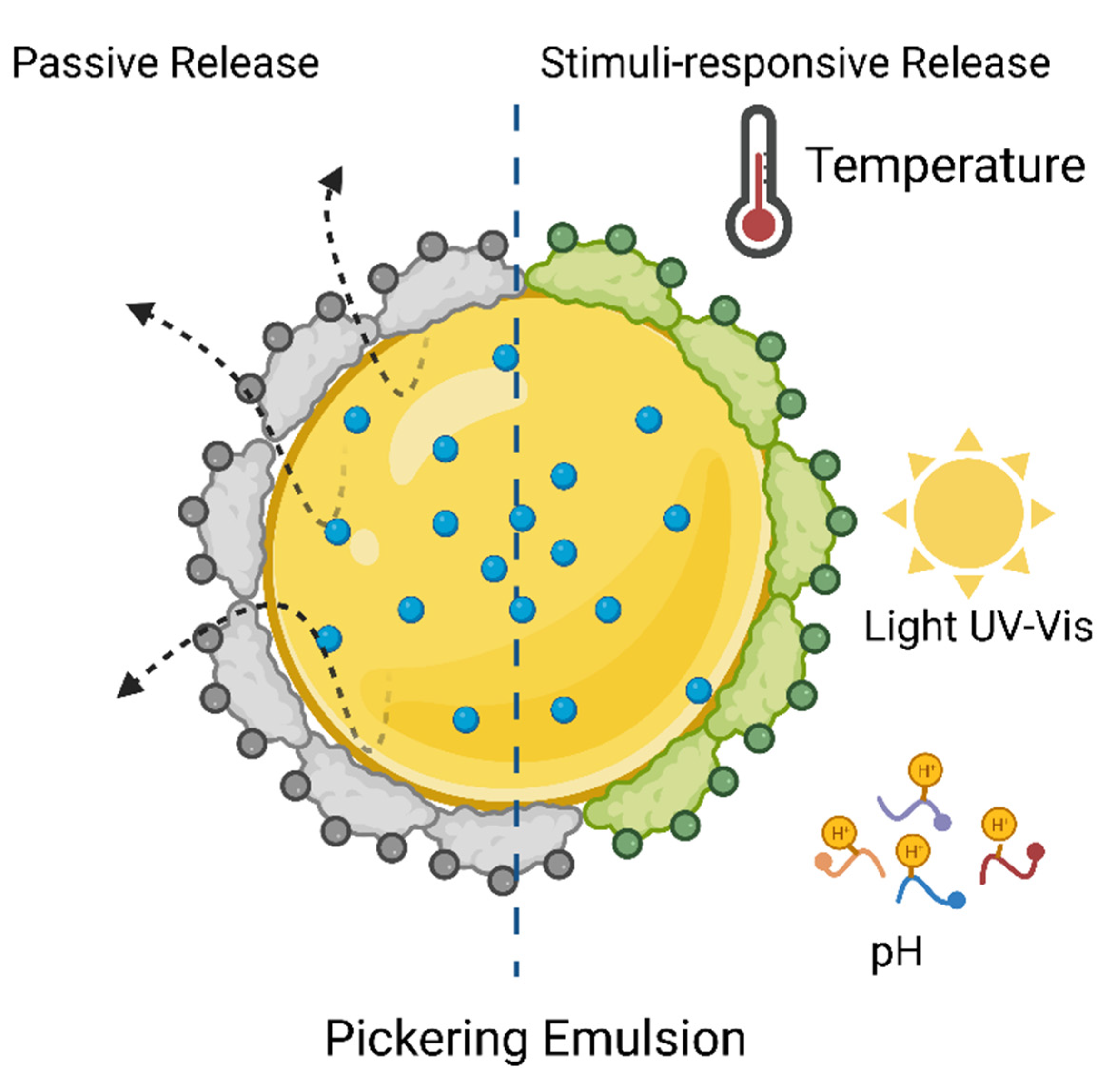
| Chemical System | ||||
|---|---|---|---|---|
| Covalent Bond | Carrier System | Formulation | Pesticides | Refs. |
| comonomers | Hybrid materials | (CNT-g-PCA) | Zineb Mancozeb | [18] |
| multifunctional system | Peptide-polymer | Trypsin-PEG | Modulating oostatic factor | [19] |
| Ionic bond | Hallow sphere | Calcium-alginate | Cypermethrin | [20] |
| Electrostatic complex | Polyelectrolyte complex | Clay-gelatine pGPMA-dsRNA | MCPA dsRNA | [21,22] |
| Cluster | Metallic nanoparticles | Cu—TM Cu0, Ag0 | Thiophanate methyl | [23,24,25] |
| Physical System | ||||
| Encapsulation | Coprecipitation Polycondensation Vesicle | Polyelectrolytic interaction. Cation vesicular surfactants | Trichlorfon Acetochlor Benzoylurea-paraquat DNA, RNA Copper | [12,26,27,28,29,30,31,32,33] |
| Emulsion | Mixed micelles Pickering emulsion Nanoemulsion Liquid crystal Liposome | mPEG13–b–PLGA5–3 Alginate-Ca++ Water-in-oil Monoolein 18-99 PC-chitosan | Pyrethrin γ-cyclodextrin Citronella Phytantriol α-cypermethrin | [34,35,36,37,38,39] |
| Matrix system | Hybrid materials | mPEG-PLGA | Metolachlor | [10,18] |
| Porous system | Grafted-NP. Sol-gel composite | 4-ethylortho-Silicate ATP-biochar colloidal silica | Benzoylurea-Fe2O3 Glyphosate | [31,40,41,42,43] |
| Foams | Polymeric emulsion | Poly(alkylene-oxide] alkanol | Glyphosate acid Acetochlor | [29,44] |
| Osmotic pumps | Polymeric coating | Cellulose ester/ PEG/Inorganic salt | Diazinon | [45] |
| Mechanism/Nanomaterials | Pros Effect | Cons Effect | Refs. |
|---|---|---|---|
| Depot | Continuously release, utilization efficiency | Slow insect toxicity non-target | [48] |
| Target | Safe | High costs | [3,12] |
| Stimuli-responsive [thermic, light, pH, ion, humidity,] | Controlled release, reducing the loss, increased efficiency, biosensor, fast action, high availability | Random control Irreversible phase of AcI release, enhanced cellular uptake. Low selective toxicity, low biodegradability, induced pesticide resistance in target organisms | [12,42,43,50,51,52,53] |
| Carbon nanotubes | Biosensor; water uptake | Rise of ROS and cell death | [54] |
| Polymer-protein conjugated | Decrease bacterial resistance | Non-target | [19,21] |
| Complex system polymer-based | Increase bioavailability decrease leaching/drift. Catalytic reduction. Biosensor | Low environmental stability | [20,55] |
| Interpolyectrolyte complex | Multifunctional. Overcome multidrug resistance | Low chemical stability | [22] |
Publisher’s Note: MDPI stays neutral with regard to jurisdictional claims in published maps and institutional affiliations. |
© 2021 by the authors. Licensee MDPI, Basel, Switzerland. This article is an open access article distributed under the terms and conditions of the Creative Commons Attribution (CC BY) license (https://creativecommons.org/licenses/by/4.0/).
Share and Cite
Chaud, M.; Souto, E.B.; Zielinska, A.; Severino, P.; Batain, F.; Oliveira-Junior, J.; Alves, T. Nanopesticides in Agriculture: Benefits and Challenge in Agricultural Productivity, Toxicological Risks to Human Health and Environment. Toxics 2021, 9, 131. https://doi.org/10.3390/toxics9060131
Chaud M, Souto EB, Zielinska A, Severino P, Batain F, Oliveira-Junior J, Alves T. Nanopesticides in Agriculture: Benefits and Challenge in Agricultural Productivity, Toxicological Risks to Human Health and Environment. Toxics. 2021; 9(6):131. https://doi.org/10.3390/toxics9060131
Chicago/Turabian StyleChaud, Marco, Eliana B. Souto, Aleksandra Zielinska, Patricia Severino, Fernando Batain, Jose Oliveira-Junior, and Thais Alves. 2021. "Nanopesticides in Agriculture: Benefits and Challenge in Agricultural Productivity, Toxicological Risks to Human Health and Environment" Toxics 9, no. 6: 131. https://doi.org/10.3390/toxics9060131
APA StyleChaud, M., Souto, E. B., Zielinska, A., Severino, P., Batain, F., Oliveira-Junior, J., & Alves, T. (2021). Nanopesticides in Agriculture: Benefits and Challenge in Agricultural Productivity, Toxicological Risks to Human Health and Environment. Toxics, 9(6), 131. https://doi.org/10.3390/toxics9060131








